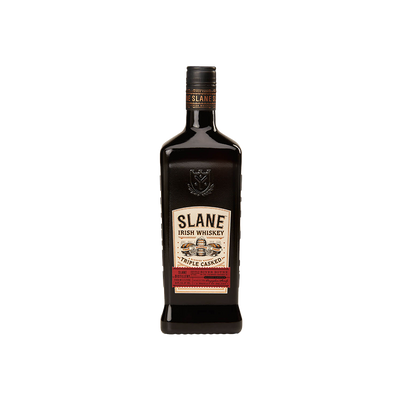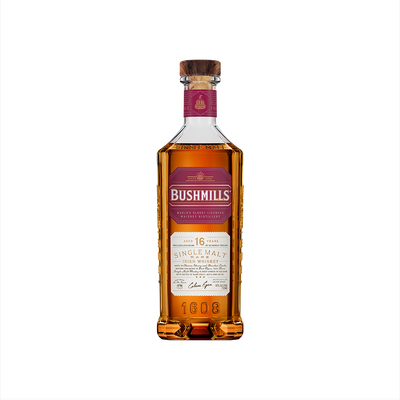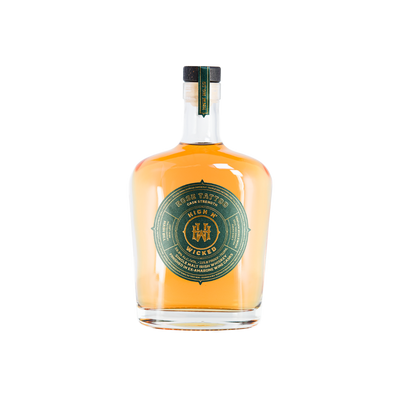Single Malt Irish Whiskey
What is Single Malt Irish Whiskey?
Single Malt Irish Whiskey represents a specific category within Irish Whiskey that's produced entirely from malted barley at a single distillery using pot stills. This type of whiskey must be distilled, aged, and bottled at one location, which gives it a distinct character that reflects both the distillery's unique production methods and the local environment. The "single" designation refers to the single distillery source, while "malt" indicates that only malted barley was used in the mash bill, creating a whiskey known for its rich, complex flavors and smooth finish.
Learn More About Single Malt Irish Whiskey
What makes Single Malt Irish Whiskey unique?
Single Malt Irish Whiskey stands apart from other Irish whiskeys by using only malted barley from a single distillery, creating a pure expression of that distillery's character and terroir. While blended Irish whiskeys combine grain and malt whiskeys from multiple sources, and single pot still whiskeys mix malted and unmalted barley, single malts offer the most focused flavor profile possible. This category showcases the distiller's skill with malted barley alone, often resulting in lighter, more delicate spirits compared to their Scottish counterparts due to Ireland's traditional triple distillation method.
How is Single Malt Irish Whiskey made?
Single malt Irish whiskey starts with 100% malted barley that's mashed, fermented, and distilled at a single distillery, typically using traditional copper pot stills. Most Irish distilleries employ triple distillation, which creates a smoother, lighter character compared to the double distillation common in Scotland. The spirit must then age in wooden casks for a minimum of three years, though most premium expressions spend much longer developing their complex flavors.
How do you drink Single Malt Irish Whiskey?
Single malt Irish whiskey shines brightest when sipped neat or with just a splash of water to open up its flavors, though it's equally at home on the rocks for a more relaxed drinking experience. While some folks might shoot it (though that's really missing the point), this premium spirit works beautifully in classic whiskey cocktails like an Irish Coffee, Whiskey Sour, or Old Fashioned where its smooth character can still come through. You'll find single malt Irish whiskey perfect for cozy autumn evenings by the fire, winter celebrations, or any time you want to slow down and savor something special - its approachable nature makes it ideal for both quiet contemplation and convivial gatherings with friends.
How do I choose good Single Malt Irish Whiskey?
Start by considering whether you want triple-distilled smoothness (most Irish distilleries) or the richer, more robust character of double-distilled expressions like those from Waterford or some Redbreast releases. For sipping neat, look for age statements of 12 years or older and consider finished expressions in sherry, port, or bourbon barrels that add layers of complexity. When mixing cocktails, younger expressions without finishing work beautifully since their clean, honeyed character won't get lost behind other ingredients – save those expensive 18-year-olds for proper glassware and good company.
Nutritional Information
Typical Calorie Range per Ounce: 64-70 calories
Typical Carbohydrate Range per Ounce: 0 grams
Typical Sugar Range per Ounce: 0 grams
Typically Gluten Free: Yes
While single malt Irish whiskey is generally considered gluten-free due to the distillation process removing gluten proteins, those with celiac disease or severe gluten sensitivity should always verify the specific product information with the manufacturer. Some brands may have cross-contamination during production or use additives that could affect gluten content. When in doubt, reach out to the distillery directly for confirmation.
Scrolled this far? Your reward? Single Malt Irish Whiskey Trivia!
- Irish single malts can legally use any type of oak barrel – while Scotch whisky is restricted to previously used barrels, Irish distillers have complete freedom to age their whiskey in virgin oak, sherry casks, port barrels, or even exotic woods like Japanese mizunara. This regulatory flexibility explains why some Irish single malts taste so wildly different from their Scottish cousins.
- The famous "triple distillation" rule is actually a myth – many Irish single malts are only distilled twice, just like most Scotch whiskies. Redbreast, one of Ireland's most celebrated single malts, uses triple distillation, but plenty of others stick to double distillation. The smooth character people associate with Irish whiskey comes more from the production techniques and mashbill than the number of distillations.
- Irish single malt was nearly extinct for decades – by the 1970s, only one distillery in all of Ireland was producing single malt whiskey: Old Bushmills. Everything else was grain whiskey or blends. The single malt category we know today essentially had to be rebuilt from scratch starting in the 1980s, making it younger as a commercial category than many American craft beer styles.
- Some Irish single malts contain up to 30% unmalted barley – unlike Scotch single malt, which must be 100% malted barley, Irish regulations allow single malt to include a portion of raw, unmalted barley in the mash. This gives certain Irish expressions a distinctive creamy, oily texture and slightly different flavor profile that's impossible to achieve in Scotland.
- The pot stills used for Irish single malt are often massive compared to Scottish ones – some Irish distilleries use pot stills that hold over 75,000 liters, nearly ten times larger than typical Scottish pot stills. These giant copper vessels create longer contact time between the spirit and copper, producing a cleaner, more refined character that contributes to that signature Irish smoothness.
Higher-proof spirits can be intense. Mix carefully, taste thoughtfully, and enjoy responsibly.
Gift message (optional)



